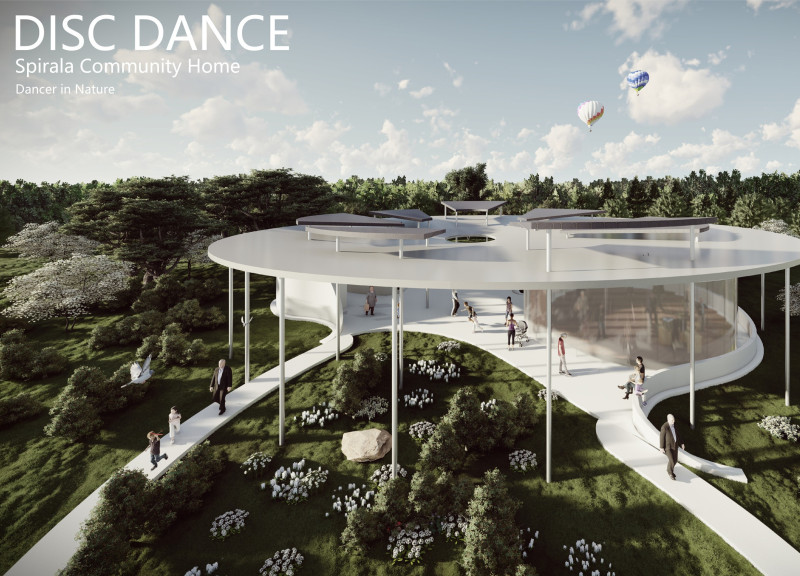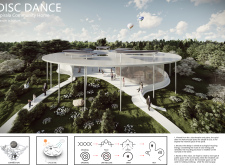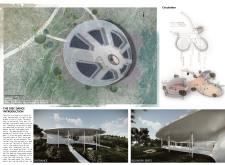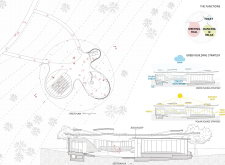5 key facts about this project
The Spirala Community Home is set on a gently sloping hillside, designed to coexist with its natural surroundings. It aims to bring people together through its layout, featuring a spiral concept that integrates both shared and private spaces. The project places a strong emphasis on functionality and sustainability, creating an environment that encourages social interaction and community living.
Design Concept
At the heart of the design is the spiral shape, which creates a spacious interior while enhancing usability. This form facilitates movement, allowing residents to engage with each other easily. By promoting an open layout alongside intimate areas, the design invites both gathering and personal reflection within the same structure.
Circulation Strategy
The building's circulation is well thought out, guiding foot traffic efficiently while offering specific zones for different activities. There are designated spaces for meetings, relaxation, and dance, allowing for a variety of communal functions to take place. The low boundary wall serves as a gentle transition from the building to the landscape, providing separation while also offering additional seating for gatherings.
Materiality and Sustainability
Material choices focus on sustainability without compromising the structural integrity. Steel is used prominently in the structure, and insulation materials improve energy conservation. The roof is equipped with solar panels, underscoring the commitment to resource efficiency. There are also systems in place for collecting rainwater, which reinforces the goal of ecological responsibility in everyday living.
Integration with Nature
A key aspect of the design is how it blends with the surrounding environment. The roof mimics the contours of the hillside, avoiding a jarring contrast with the landscape. This approach emphasizes a strong connection between the residents and nature, creating an atmosphere that encourages appreciation of the outdoors. The use of design to foster this relationship enhances the overall experience of living in the community home.






















































